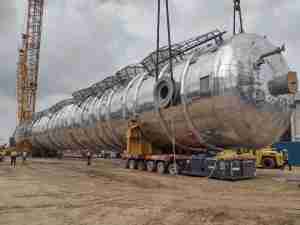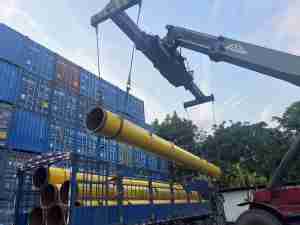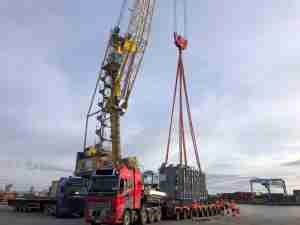Boston, MA - S&P Global Ratings today revised to negative the outlooks on nearly all long-term debt ratings in the U.S. transportation infrastructure sector due to the severe and ongoing impacts associated with the COVID-19 pandemic. We believe the dramatic contraction of the global and U.S. economies and virtual collapse of travel and mobility across the transportation subsectors is a demand shock without precedent, with no definitive indication at this time regarding its duration and severity as well as the follow-on effects of an economic recession. The outlook revisions to negative of each issuer and issuer credit rating follows on our updated overall view of the sector (see "U.S. Transportation Infrastructure Sector Outlook Update: Now Negative For All Sectors" published March 16, 2020, on RatingsDirect).
We are affirming the ratings and outlooks for transportation infrastructure issuers with existing negative outlooks and not modifying the ratings or outlooks of debt secured by federal transportation grants.
The expected passage into U.S. law of an approximately $2 trillion federal stimulus package that includes direct financial aid to airport operators ($10 billion) and transit authorities ($25 billion) is viewed favorably and will alleviate immediate liquidity pressures, as well as assist with near-term operational funding requirements including debt service. Aid to the airline industry, in the form of loans and loan guarantees, should also support payments from airline tenants to airport operators. However, long-term credit implications across all sectors have yet to unfold, and we expect greater visibility on the broader impacts on issuers' financial and business profiles in the coming months.
This action applies to the ratings of approximately 187 issuers and 252 ratings (see list below) in the following six transportation subsectors: airports, toll roads and bridges, ports, transit systems, parking, and special facilities (e.g. consolidated rental car facilities at airports). Our entire transportation infrastructure portfolio of senior and subordinated credit ratings has a modal rating of 'A' with nearly all subject to volume risk--that is, they are dependent on passengers, riders, cargo, and vehicles to generate operating revenues necessary to meet operating requirements, debt service obligations, and capital needs.
"The revision of credit rating outlooks to negative provides clarity to market participants that issuers face at least a one-in-three likelihood of a negative rating action over the intermediate term for investment-grade credits (generally up to two years) and over the short term for speculative-grade credits (generally up to one year)," said S&P Global Ratings credit analyst Kurt Forsgren. All ratings will be individually reviewed with respect to an issuer's specific exposure to, and ability to mitigate against, the financial and operational challenges in the near-to-intermediate term and our views of longer term risks. Negative outlooks on specific ratings may be returned to stable on a case-by-case basis in the near-to-medium term.
It is important to recognize that the transportation infrastructure sectors benefit from–-and the current ratings on them reflect-–strong fundamental credit features including the often-dominant business positions that both support their ability to collect revenues from users, largely without significant regulatory limitations or approvals, and recover from demand shocks such as COVID-19. Similarly, management teams of the highly rated issuers in our portfolio are experienced, generally conservative in their budgeting and forecasting assumptions, and have historically taken measures that balanced meeting their public missions as well as debt service obligations. We view overall liquidity levels to be favorable with median unrestricted days' cash on hand that has averaged near 600 days for fiscal years 2018 and 2019.
As of this date, credit conditions in the transportation industry continue to erode with plunging passenger and transaction volumes across the board in air travel, transit, toll facilities, and parking, as mobility is severely restricted or prohibited in many locations under stay-in-place orders. Collective efforts by federal, state and local officials to contain the virus outbreak and minimize the public health effects of COVID-19 by "flattening the curve" are both reducing the economic activity that the transportation sectors depend upon and prolonging the period volumes are depressed before recovering. Also, the lingering effects from trade conflicts and tariffs combined with the COVID-19 outbreak in China have dramatically disrupted shipping and maritime trade. (See "U.S. Ports Face Headwinds," published Feb. 19, 2020.)
Based on our analysis and preliminary year-over-year data reported by issuers that we rate, volume in the past two weeks from passengers, riders, toll and parking transactions as well as shipping containers are lower compared with the same period in 2019; in a range of 60%-90% on the high end to 20%-40% on the low end depending on the transportation asset. Some tolled facilities and ports appear less affected on a relative basis, but the declines for all transportation infrastructure subsectors are significant and, for many, financially unsustainable at the current depressed levels.
Critical to the near and long-term prospects of the transportation sectors is the economic outlook, which continues to worsen both globally and in the U.S. (See "Global Macroeconomic Update, March 24: A Massive Hit To World Economic Growth," and "Credit FAQ: Assessing The Coronavirus-Related Damage To The Global Economy And Credit Quality" published March 24, 2020.) For the U.S., the year-on-year contraction in second-quarter GDP now looks to be at least double S&P Global Economics' earlier 6% estimate.
Risks remain that U.S. travel restrictions could expand domestically, with continuing or lingering concerns about health and safety magnifying the negative effects across the travel value chain. Even when travel restrictions are lifted we believe there may be an extended period before volume levels return, which pressures near-term credit quality. Also, systemic or permanent changes in consumer and industry behavior, shifts in supply chains, economic softening, and recessionary pressures could affect our view of long-term ratings.











